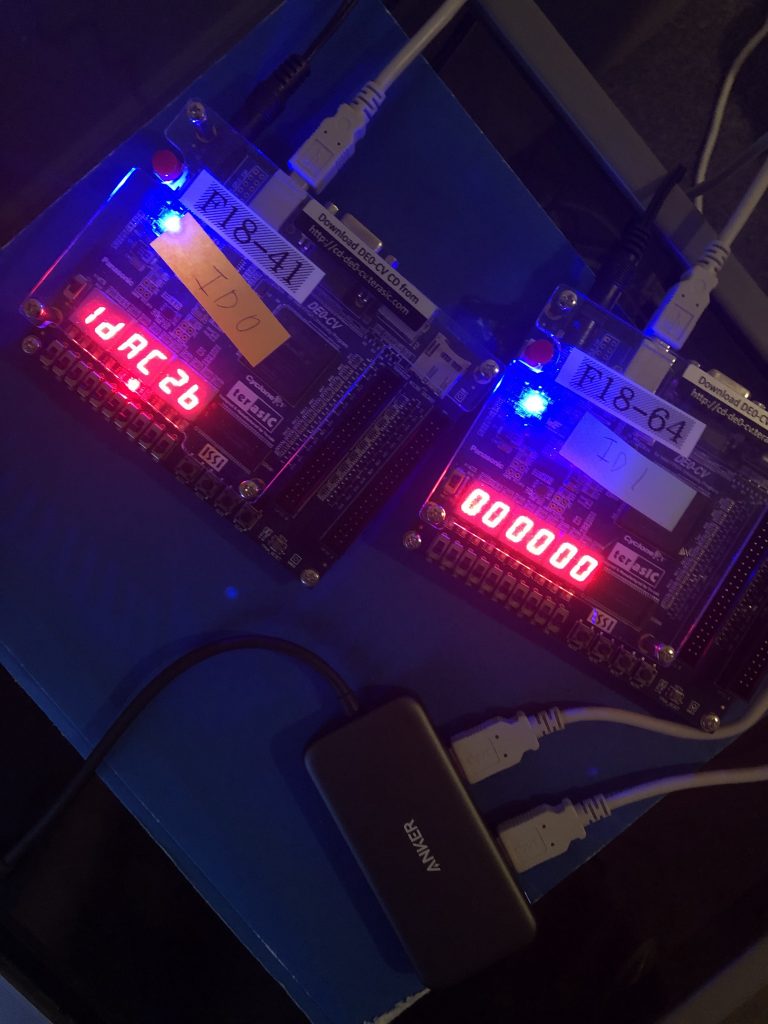I was able to accomplish most of the FPGA system setup this week. Following the feedback from the meeting, I added support for configuration switching to the project. Now, when the decision tree decides to mine a particular coin, it sends a command and a section of code outputs a script to the command line. This script will execute and load a pre-saved configuration to the FPGA through Quartus Programmer. I tested this setup with an FPGA using multiple Bitcoin mining modules. I decided on using eight per FPGA through extensive testing to see the amount of area each design would take. I also tested a system with two FPGAs mining in parallel. Eventually we would like to scale this to five or ten but the design works well with two boards and I see no reason why it wouldn’t be able to scale.

Although the FPGA part of the project is almost complete, I am still unable to test communication with the Raspberry Pi because that component is still being worked on. All my tasks are on schedule except for testing this FPGA to Pi communication. I will keep checking in with the team to see what the status is and if I can take on more tasks.
Next week, I want to finalize the design for the second cryptocurrency that we are mining. I am hoping to have the hash algorithm, mining module, and nonce verification modules complete. I would also like to test this component both through simulation and synthesis with a multi-FPGA setup before the demo on Wednesday but I may only be able to do this on a one FPGA setup. The Quartus compilation time for the code is approaching 20 minutes which limits the degree of synthesis testing I can perform.
